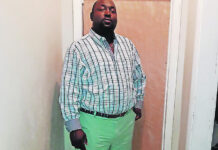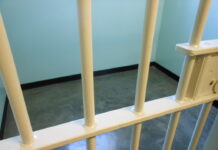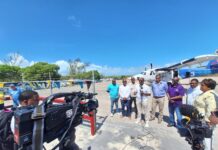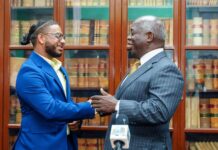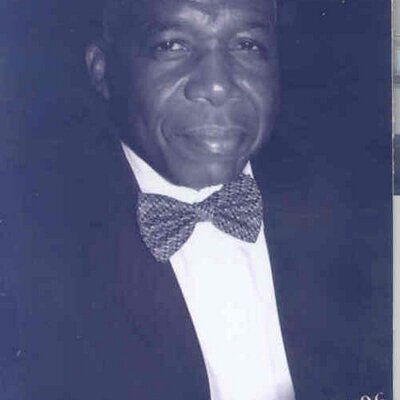
Nassau, Bahamas – Godfrey Eneas, President of BAMSI and his senior executive team sat down with the Bahamas Information Services at BAMSI’s new offices in the Island Traders Building on Monday, 1st September to provide an update on the progress and plans of the Bahamas Agriculture and Marine Science Institute.
The President was beaming with pride as he confirmed that consistent with the public pronouncements of the Prime Minister at the ground breaking ceremony for BAMSI last February, the institute is on schedule to receive its first class of fifty students this fall, the 29th September 2014 to be exact.
On the issue of a master plan to strategically guide the growth and development of BAMSI, Dr. Thomas pointed out that there a number of plans inclusive of a master plan. “We have a farm plan and we know we are approaching this project sequentially. We could not have established 15 – nearly 20-odd acres of Bananas, going up to 50 (acres) and 12 acres of Papaya without a plan.” The acreage includes 5 acres of Persian Limes and 4 acres of Coconuts. He went on to say that the farm plan includes a planting schedule, a developmental schedule, which BAMSI is following along with an irrigation system. “The irrigation system is being laid out – it must have a plan. So it is not a haphazard process that is going on,” said Dr. Thomas
“In conjunction (with the farm plan), there is a plan for the campus, the physical structures of the campus, there is another plan for that,” chimed in Mr. Eneas, continuing that in addition to the 20-year agricultural plan for the entire sector, there are essentially four plans that make up the institute: There is a plan for the construction of the physical plant that comprises the campus; a farm plan for the agriculture infrastructure and crop development that includes processing facilities and an abattoir; thirdly there is a plan for the sequential roll out of a research and development program in the discipline marine science at the institute; and last but not least, there is an academic plan.
The master plan for Phase 1 of the campus was developed by the Diamond Consulting Group, headed by local architect Sean Farrington.
Providing further details on the marine science division of the institute was Dr. Vallierre Deleveaux. He said that the aquaponics project should be operational by the end of the month. This project involves the harvesting of fresh water fish in a balanced, controlled and enclosed ecosystem where the marine life and plant life will co-exist and feed off each other. Moving sequentially, Dr. Deleveaux added that the institute will introduce “offshore cultures” into the marine component of the project, specifically the introduction of “additional aqua culture operations and shrimp culture operations” in association with partners from universities abroad in addition to entrepreneurs, both local and international.
Additionally, the research component in marine science is scheduled to commence this month with the first international course involving foreign students to commence in January 2015. The scope of the research will include the in-depth examination of the behavior of marine species such as Bonefish, the Bahamian Grouper and Conch. “There is a full-fledged research program that will be underway at BAMSI,” said Dr. Deleveaux.
The Bahamas Agriculture and Marine Science Institute is an autonomous body located in North Andros. Accredited Associate degrees and certificates will be offered by The College of The Bahamas through its partnership with the BAMSI.


